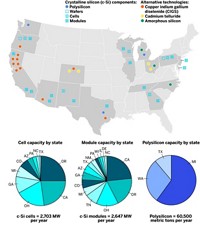Advertisement
Grab your lab coat. Let's get started
Welcome!
Welcome!
Create an account below to get 6 C&EN articles per month, receive newsletters and more - all free.
It seems this is your first time logging in online. Please enter the following information to continue.
As an ACS member you automatically get access to this site. All we need is few more details to create your reading experience.
Not you? Sign in with a different account.
Not you? Sign in with a different account.
ERROR 1
ERROR 1
ERROR 2
ERROR 2
ERROR 2
ERROR 2
ERROR 2
Password and Confirm password must match.
If you have an ACS member number, please enter it here so we can link this account to your membership. (optional)
ERROR 2
ACS values your privacy. By submitting your information, you are gaining access to C&EN and subscribing to our weekly newsletter. We use the information you provide to make your reading experience better, and we will never sell your data to third party members.
Business
Dow to shut down solar shingle business
Demand suffered from competition with cheaper traditional solar panels
by Melody M. Bomgardner
July 11, 2016
| A version of this story appeared in
Volume 94, Issue 28

Dow Chemical will stop producing its Powerhouse-brand solar shingles, which the firm has been manufacturing at sites in Michigan and California. The change, which will result in the loss of roughly 130 positions, is part of a larger restructuring Dow announced after completing its absorption of Dow Corning.
The shingles, which debuted in 2011, featured a slim profile thanks to their use of thin-film copper indium gallium selenide—or CIGS—photovoltaics. They were marketed to home builders looking to build energy-efficient homes with a more elegant roofline than is created by the bulky racks required for traditional polysilicon panels. Dow CEO Andrew N. Liveris touted the product as transformative for the company and part of its strategy to invent new technologies.
But the shingles were commercialized during a time when many solar firms were falling into bankruptcy due to an influx of low-cost polysilicon panels from manufacturers in China. When Nuvosun, Dow’s CIGS supplier, faced financial problems in 2013, Dow acquired the company.
Dow had planned to roll out an updated version of the shingles this year, but the company now says it has seen a clear shift in costs and demand for solar products in the housing market. Thin-film solar materials such as CIGS have lower efficiencies and higher costs compared with traditional silicon panels—and that difference has widened in recent years.
A European Union-backed organization called PVsites is working to produce building-integrated photovoltaic products that are both cost-effective and attractive to builders and homeowners. Although appearance is important, PVsites says customers expect the same efficiency as conventional panels and require that the technology fully pay for itself within five to seven years.
Dow will still be significantly invested in materials used to make photovoltaics, albeit mainly traditional polysilicon versions. It sells metallization pastes and chemicals used for imaging, cleaning, and texturizing solar cells. And its purchase of Dow Corning added to its ownership interest in Hemlock Semiconductor, a leading manufacturer of polysilicon. Hemlock is a joint venture of Dow, Corning, and Shin-Etsu Handotai.



Join the conversation
Contact the reporter
Submit a Letter to the Editor for publication
Engage with us on Twitter